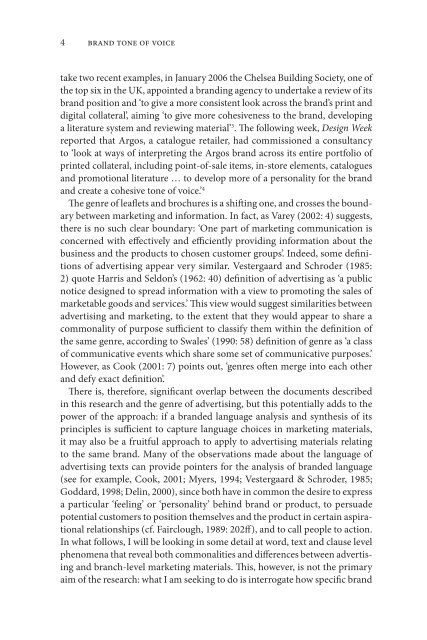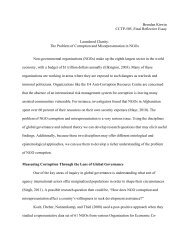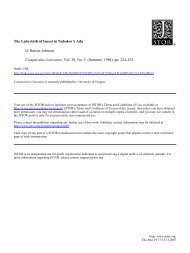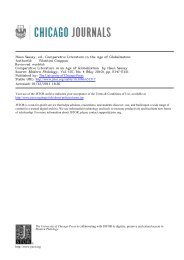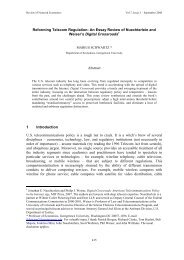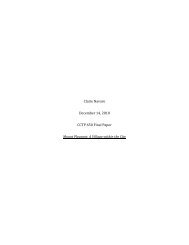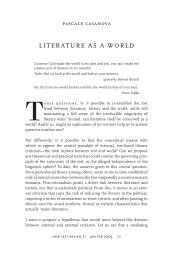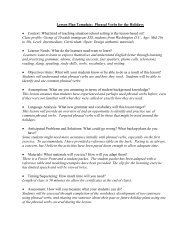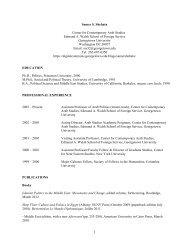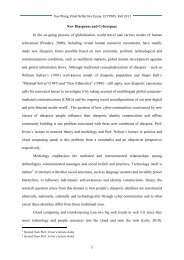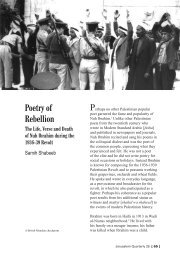Brand Tone of Voice:
Brand Tone of Voice:
Brand Tone of Voice:
- No tags were found...
Create successful ePaper yourself
Turn your PDF publications into a flip-book with our unique Google optimized e-Paper software.
and tone <strong>of</strong> voicetake two recent examples, in January 2006 the Chelsea Building Society, one <strong>of</strong>the top six in the UK, appointed a branding agency to undertake a review <strong>of</strong> itsbrand position and ‘to give a more consistent look across the brand’s print anddigital collateral’, aiming ‘to give more cohesiveness to the brand, developinga literature system and reviewing material’ 3 . The following week, Design Weekreported that Argos, a catalogue retailer, had commissioned a consultancyto ‘look at ways <strong>of</strong> interpreting the Argos brand across its entire portfolio <strong>of</strong>printed collateral, including point-<strong>of</strong>-sale items, in-store elements, cataloguesand promotional literature … to develop more <strong>of</strong> a personality for the brandand create a cohesive tone <strong>of</strong> voice.’ 4The genre <strong>of</strong> leaflets and brochures is a shifting one, and crosses the boundarybetween marketing and information. In fact, as Varey (2002: 4) suggests,there is no such clear boundary: ‘One part <strong>of</strong> marketing communication isconcerned with effectively and efficiently providing information about thebusiness and the products to chosen customer groups’. Indeed, some definitions<strong>of</strong> advertising appear very similar. Vestergaard and Schroder (1985:2) quote Harris and Seldon’s (1962: 40) definition <strong>of</strong> advertising as ‘a publicnotice designed to spread information with a view to promoting the sales <strong>of</strong>marketable goods and services.’ This view would suggest similarities betweenadvertising and marketing, to the extent that they would appear to share acommonality <strong>of</strong> purpose sufficient to classify them within the definition <strong>of</strong>the same genre, according to Swales’ (1990: 58) definition <strong>of</strong> genre as ‘a class<strong>of</strong> communicative events which share some set <strong>of</strong> communicative purposes.’However, as Cook (2001: 7) points out, ‘genres <strong>of</strong>ten merge into each otherand defy exact definition’.There is, therefore, significant overlap between the documents describedin this research and the genre <strong>of</strong> advertising, but this potentially adds to thepower <strong>of</strong> the approach: if a branded language analysis and synthesis <strong>of</strong> itsprinciples is sufficient to capture language choices in marketing materials,it may also be a fruitful approach to apply to advertising materials relatingto the same brand. Many <strong>of</strong> the observations made about the language <strong>of</strong>advertising texts can provide pointers for the analysis <strong>of</strong> branded language(see for example, Cook, 2001; Myers, 1994; Vestergaard & Schroder, 1985;Goddard, 1998; Delin, 2000), since both have in common the desire to expressa particular ‘feeling’ or ‘personality’ behind brand or product, to persuadepotential customers to position themselves and the product in certain aspirationalrelationships (cf. Fairclough, 1989: 202ff), and to call people to action.In what follows, I will be looking in some detail at word, text and clause levelphenomena that reveal both commonalities and differences between advertisingand branch-level marketing materials. This, however, is not the primaryaim <strong>of</strong> the research: what I am seeking to do is interrogate how specific brand


